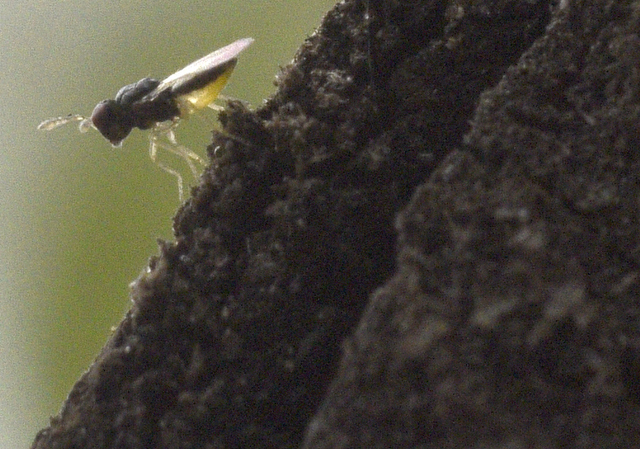Citrus Psyllid Predator Released in County
Bug v. Bug War Continues Against Disease

Armed with a small jar of Tamarixia radiata, David Morgan of the state Department of Food & Agriculture popped the top and released hundreds of the tiny, stingless wasps near a lemon tree in Carpinteria on Friday.
Calling the release a type of “snack and go,” Morgan described how the tiny predator would move through the tree and others nearby searching for the Asian citrus psyllid, an equally small insect known to carry a bacteria that has been decimating citrus trees from Florida to Brazil. With no cure in sight, orchard growers and agriculture officials have resorted to spraying with pesticides and are also looking at biological controls like this one.
Another parasitic wasp, Diaphorencyrtus aligarhensis, was recently approved for release, and Morgan stopped in Santa Maria to release a few more vials’ worth as part of a small experiment. Describing the two types of wasps as no larger than a period on a page, Morgan said they didn’t fly very far because they would get lost. The project has been releasing them every few miles from Imperial and San Diego counties up to Santa Barbara and Ventura counties to see if they’ll become established.
As they munch their way through the citrus psyllids they find and lay eggs on them, neither wasp is expected to eradicate the pest, as an insecticide would, but will reduce their population and any bacteria they might carry.
Morgan added that the best way to keep the good bugs around, which only live for about a week, is to keep insects like ants away. Ants tend to eat beneficial insects like these wasps, he explained, and are attracted to the sugars excreted by the psyllid.
Since the Asian citrus psyllid was discovered in California in 2008, psyllids infected with the bacteria that causes Huanglongbing disease, or citrus greening disease, were first located in Hacienda Heights in Los Angeles in 2012. A handful of these psyllids have been found in Santa Maria, Santa Barbara, Goleta, and Carpinteria, but none were infected.



